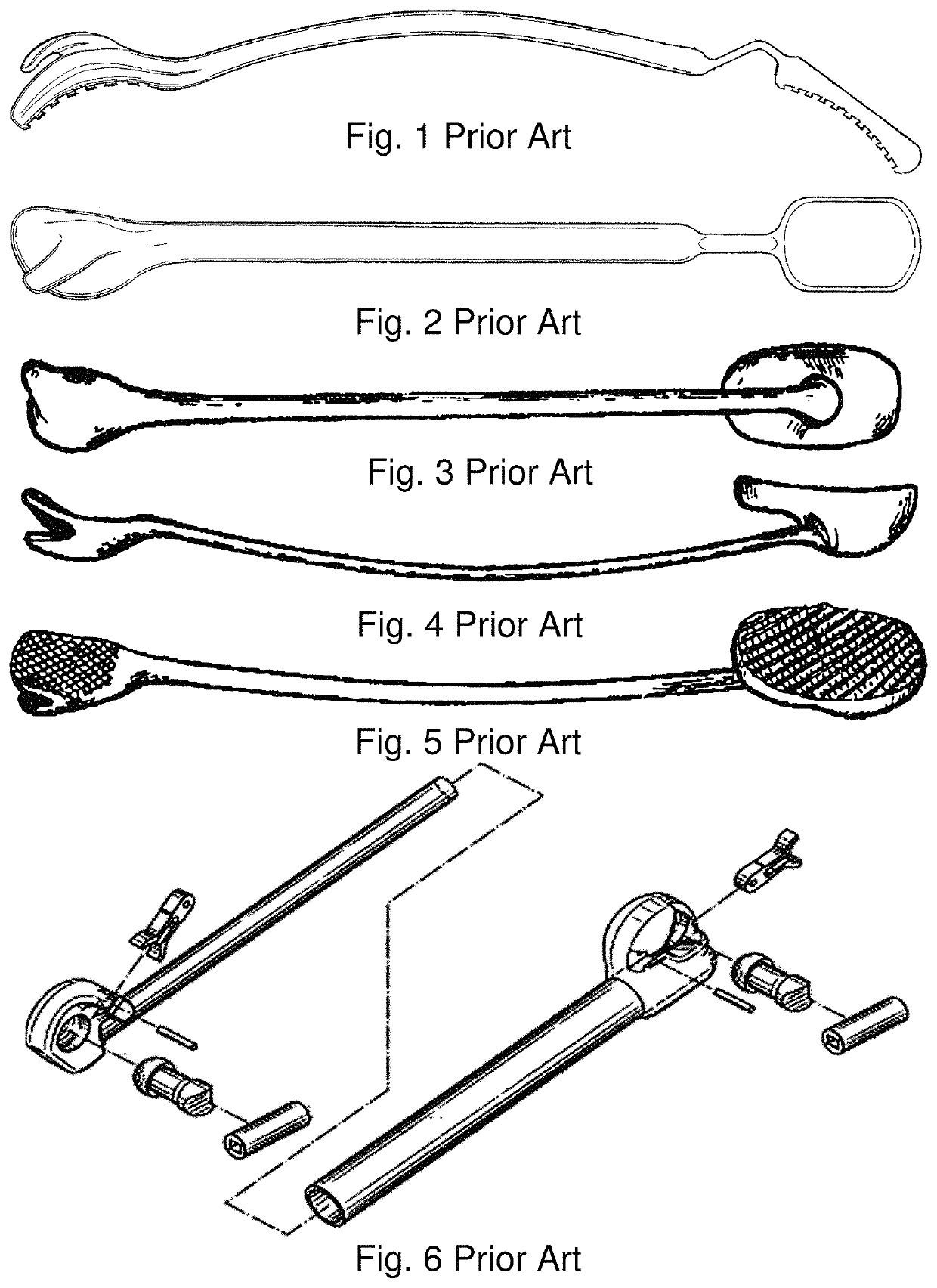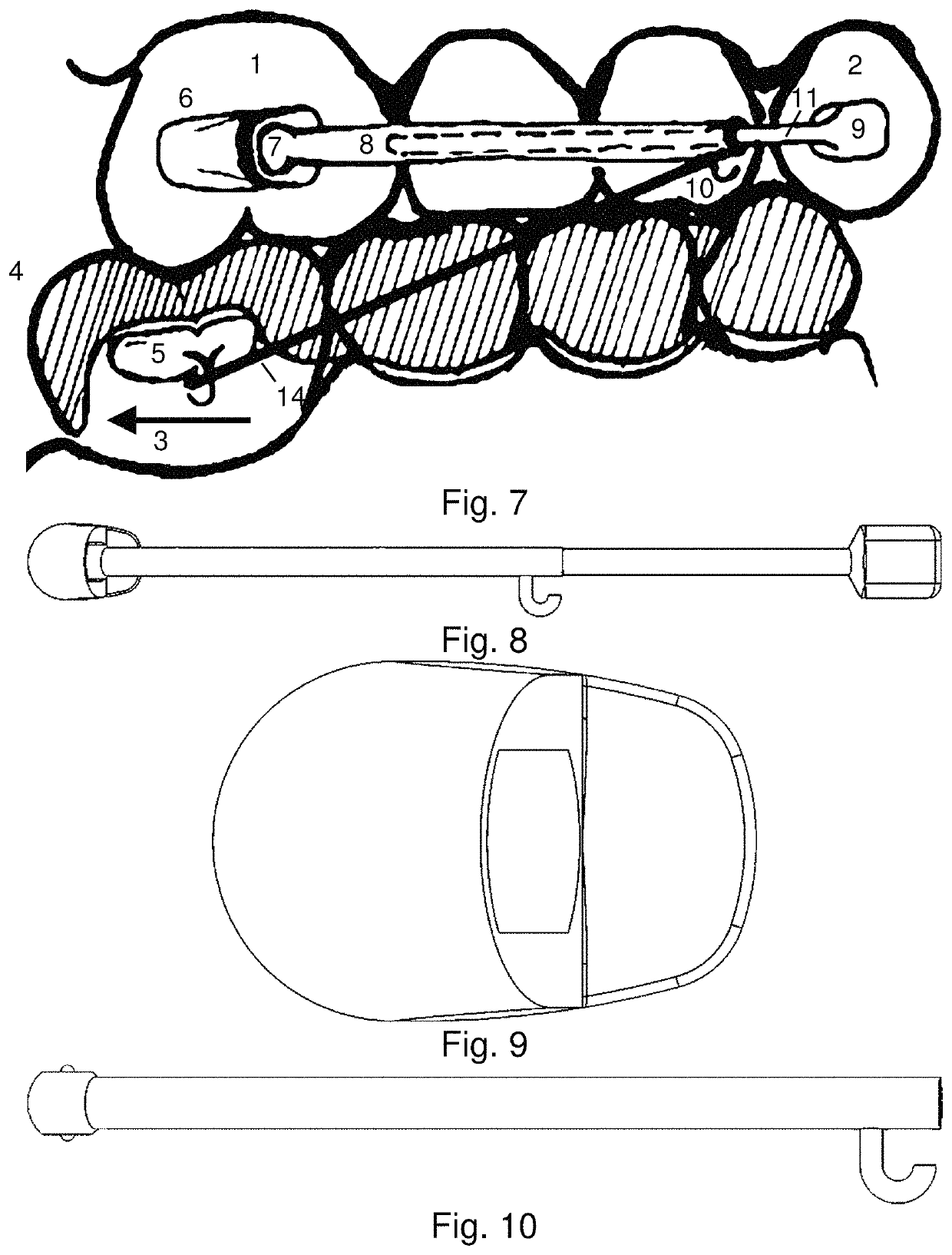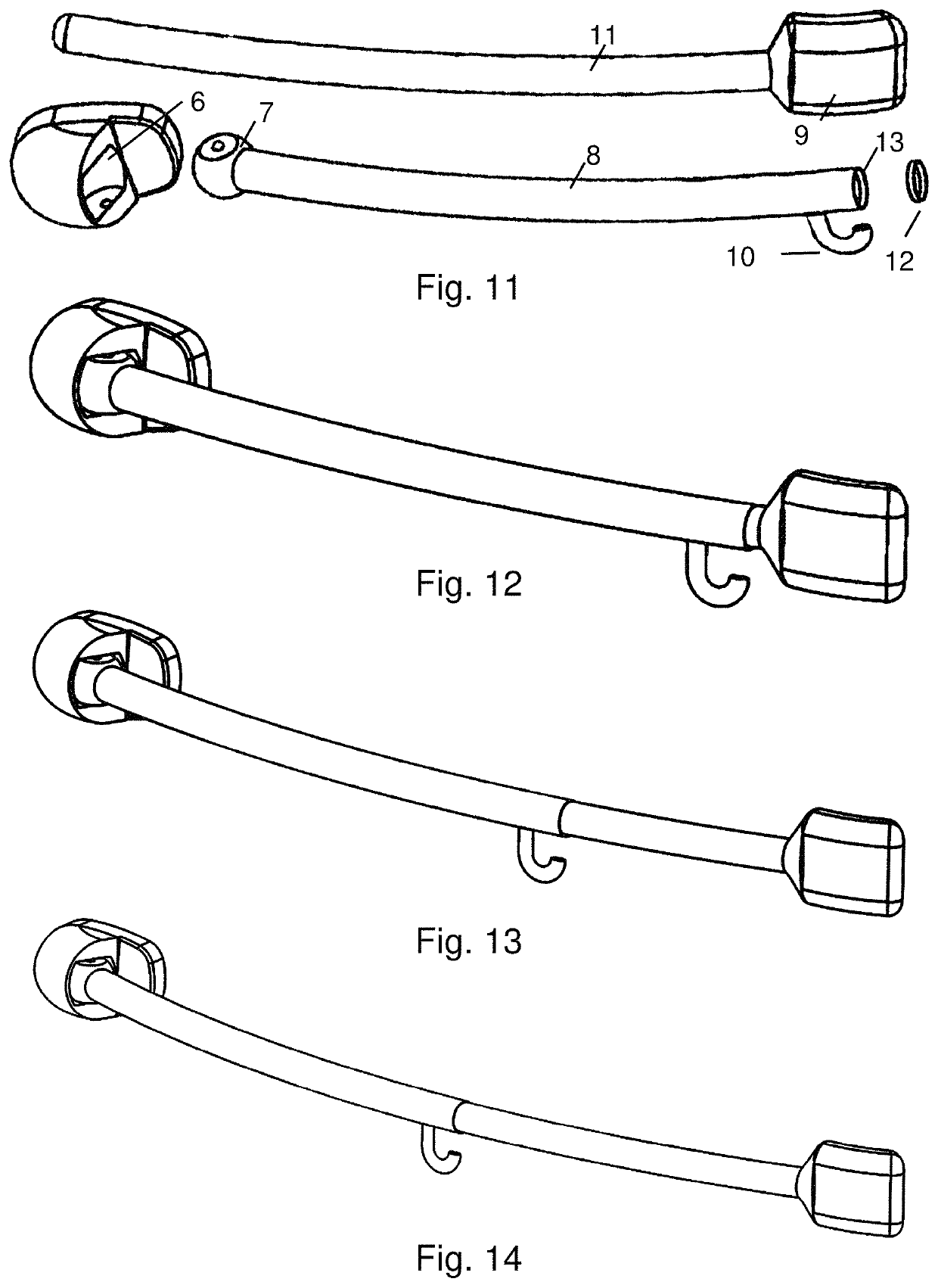Unimpeded distalizing jig
a distalizing jig and unobstructed technology, applied in the field of orthodontic appliances for distalizing molars, can solve the problems of irritation or reaction, appliance has a limited range of displacement, and has lost favor with orthodontists
- Summary
- Abstract
- Description
- Claims
- Application Information
AI Technical Summary
Benefits of technology
Problems solved by technology
Method used
Image
Examples
Embodiment Construction
[0046]The unimpeded distalizing jig according to the present invention, as depicted in FIG. 7, has three components.
[0047]FIG. 7 shows an embodiment of the invention in a use configuration. The first component, also as shown in FIG. 9 is a bondable pad 6 that is attached to, e.g., the labial surface of the first permanent molar 1. The bondable pad 6 has a recess to receive an end 7 of the second component, which is a cylindrical-tube 8 also shown in FIG. 10, that can rotate within the bondable pad 6, akin to a ball-in-socket joint. The cylindrical-tube 8 allows for the introduction of the third component, which is a rod-like structure 11, also shown in FIGS. 11-14, which has on its end opposite the ball 7 another bondable pad 9 that can be bonded or secured to the anterior stabilizing unit 2. An elastic band 14 retaining attachment pad 5 is bonded to a tooth, e.g., a molar on the other dental arch. An anchor unit 4 is established by providing a mechanical construct, such as a custom...
PUM
 Login to View More
Login to View More Abstract
Description
Claims
Application Information
 Login to View More
Login to View More - R&D
- Intellectual Property
- Life Sciences
- Materials
- Tech Scout
- Unparalleled Data Quality
- Higher Quality Content
- 60% Fewer Hallucinations
Browse by: Latest US Patents, China's latest patents, Technical Efficacy Thesaurus, Application Domain, Technology Topic, Popular Technical Reports.
© 2025 PatSnap. All rights reserved.Legal|Privacy policy|Modern Slavery Act Transparency Statement|Sitemap|About US| Contact US: help@patsnap.com



